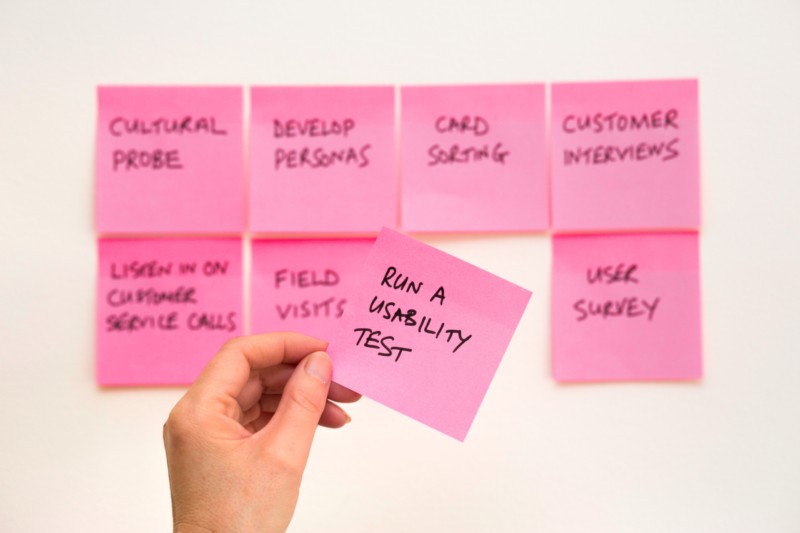If you’re revamping your website, you may be wondering: Which comes first, copy or design?
As a copywriter, you may expect me to prioritize copy first, but the truth is, you shouldn’t be starting with copy OR design.
You want to start with research.
Taking a “research-first” approach to any kind of marketing is the fastest (and most efficient) way to get results.
Why?
Because research can help you make the right decisions based on data, not gut feelings.
After all, you don’t want a website that just looks good or reads well — you want it to support your business goals and you can’t do that without research.
How do you start with research? What’s the first step?
While this may vary business to business, below are the 6 steps I typically follow when working with a client to revamp their website.
As you’ll see below, the first two steps are focused on research while the third step is focused on content strategy. Copy and design are usually the last parts of the process.
If you’d like to learn more about customer research, check out my free download, an intro to customer research here!
1. Discover
To understand the product and customers, I start by sending my clients a Discovery Questionnaire, which helps them (and me) get a better sense of their business, brand, product, customers, competitors, and more.
I also like to interview my clients (often called a “Stakeholder Interview”), allowing me to dig deeply for information and follow-up on specific responses.

2. Customer research
After the discovery process and stakeholder interviews are complete, it’s time to gather data that will help shape the Information Architecture, copy, and design.
To do that, I select specific research methodologies that are aligned with the goals of the project.
No matter the project, I always select a mix of qualitative methodologies (like customer interviews, open-ended survey questions, competitive analysis, heatmap analysis, etc) and quantitative methodologies (like closed-ended survey questions and Google Analytics data) to help me get a clear picture of the target audience.
If you’d like to learn more about the research tools I use in my business, check out this post here for guidance.

3. Translate the research data
Once all of the research has been conducted and analyzed, it has to be translated into a meaningful path forward. After all, what good is data if you don’t know what to do with it?
For my clients, I create an Insights Report that outlines everything we know about the target audience and how we must communicate in order to get them to take action.
At this point, you don’t have to worry about finding the perfect words or visuals for your website.
It’s about having a comprehensive understanding of your customer, so when the time comes, you already know exactly which words and visuals you need to hook, inspire, and engage.

4. Information Architecture (*this is a good time to start thinking about copy and design)
Once you’ve used research to understand the target audience, it’s time to combine all of the various data points with conversion best practices, psychological principles, and persuasion techniques to develop a blueprint for an effective website (aka the Information Architecture).
Creating your Information Architecture involves mapping out your pages, the content on those pages (and the hierarchy of the messages), the primary navigation, the footer navigation, pop-ups, or anything else you may need to achieve your business goals.
At this point, it can be appropriate to bring in a designer to help with this process, as she/he/they may have the right skills (i.e. User Experience, Wireframing, etc) to provide a valuable perspective.

5. Copywriting
Once you have the entire website mapped out, you can NOW start filling it in with copy. But not just any copy — it must be research-driven copy.
Research-driven copy (or “Voice of Customer data”) comes from customer interview transcripts, survey responses, chat log transcripts, reviews/testimonials, and even customer reviews from competitors/similar products (among other things).
Using copy that’s inspired by your target audience (or your ideal target audience) is going to be 100x more effective than anything you make up on your own, so don’t skimp on this part of the process.

6. Design
By this point, the designer has been involved since the Information Architecture phase, or even as early as the research phase (after all, your designer may have her/his/their own research process).
Once the Information Architecture is approved, the copywriter and designer can work together on the first page (usually the homepage) to get the messaging, look, feel, etc right.
Alternatively, the designer may prefer to wait on design until all of the copy is complete (sometimes they’ll even focus on developing the aesthetic stuff like color, logo, typography, images, etc while the writing is happening).
Either way, the copywriter should expect to stay involved as the designer uploads the copy into the designs to ensure the copy works in a visual format (usually some tweaking is involved).

It’s not copy vs design; it’s RESEARCH FIRST!
As you can see, writing the words and designing the visuals are some of the LAST steps in the entire process and, hopefully you can see why.
Building a website without research is like building a home without a blueprint, writing a book without an outline, or filming a movie without a script.
You must have a solid foundation first before you can even think about how something will look and feel and it all starts with research.
If you’re interested in working together on your next project, feel free to reach out directly: annie1maguire@gmail.com.
Want to learn more about research-driven marketing?
If you’d like to learn more about customer research, download my free guide, Intro to Customer Research, or check out my in-depth course, How to Conduct, Analyze & Apply Customer Research.
Have questions or need help? Have thoughts about copy vs design? Comment below and tell us all about it!
